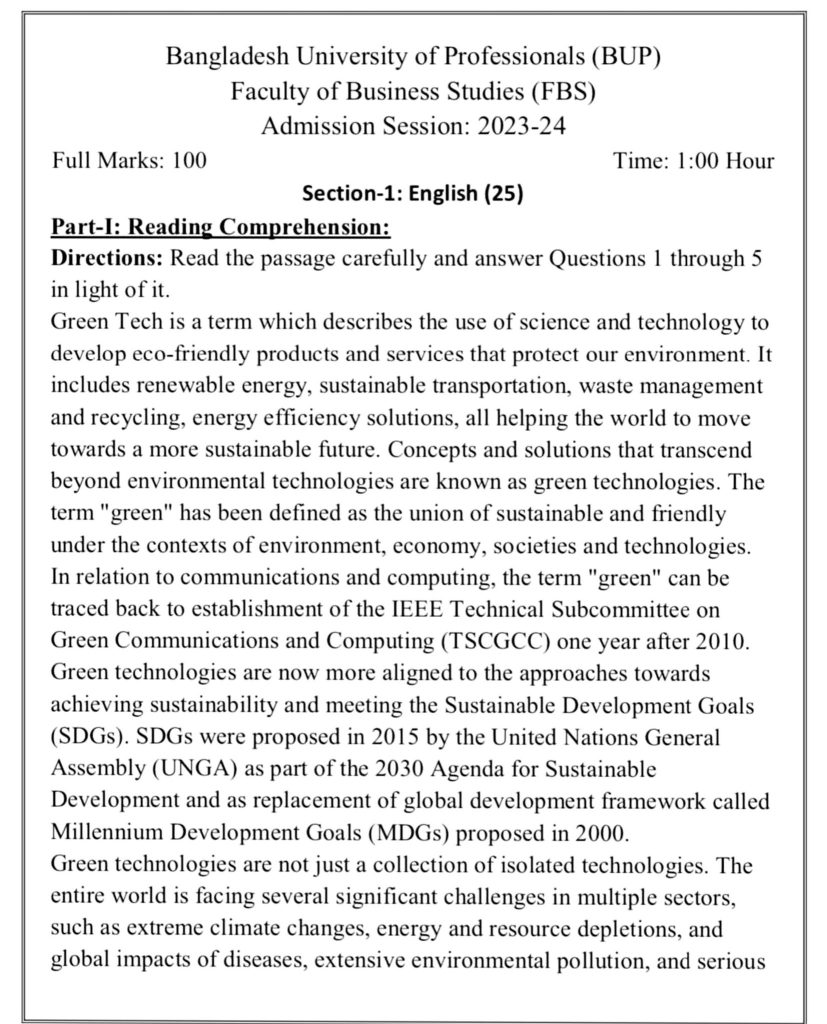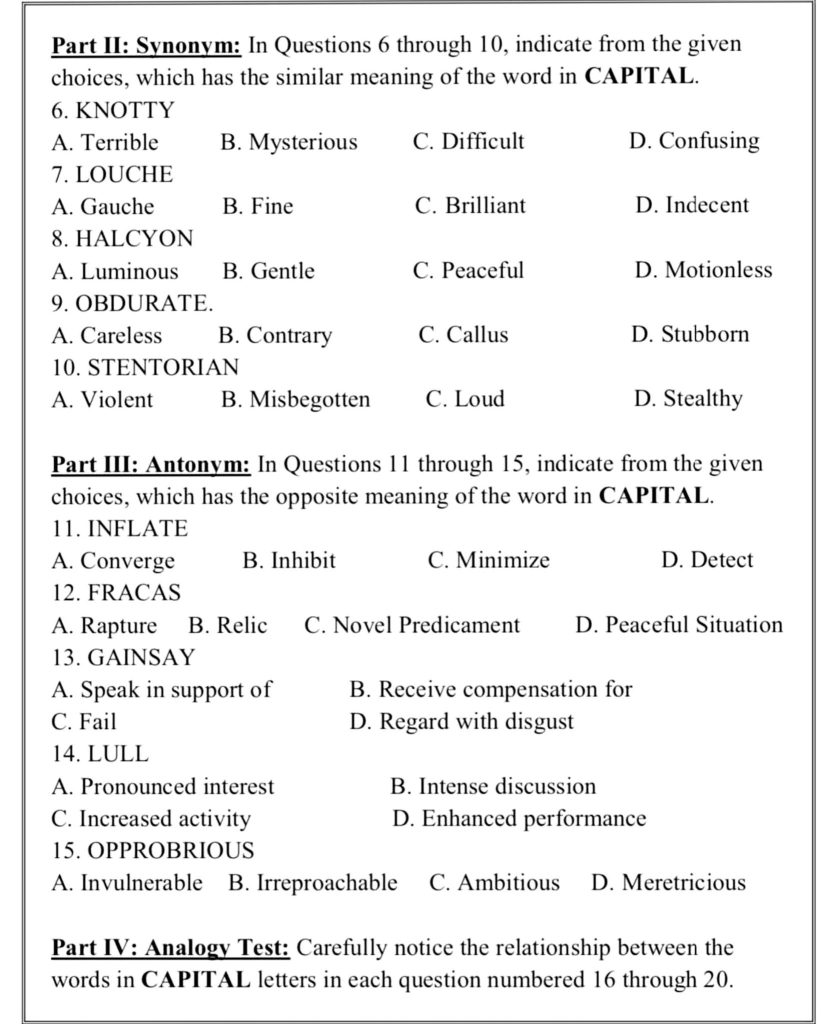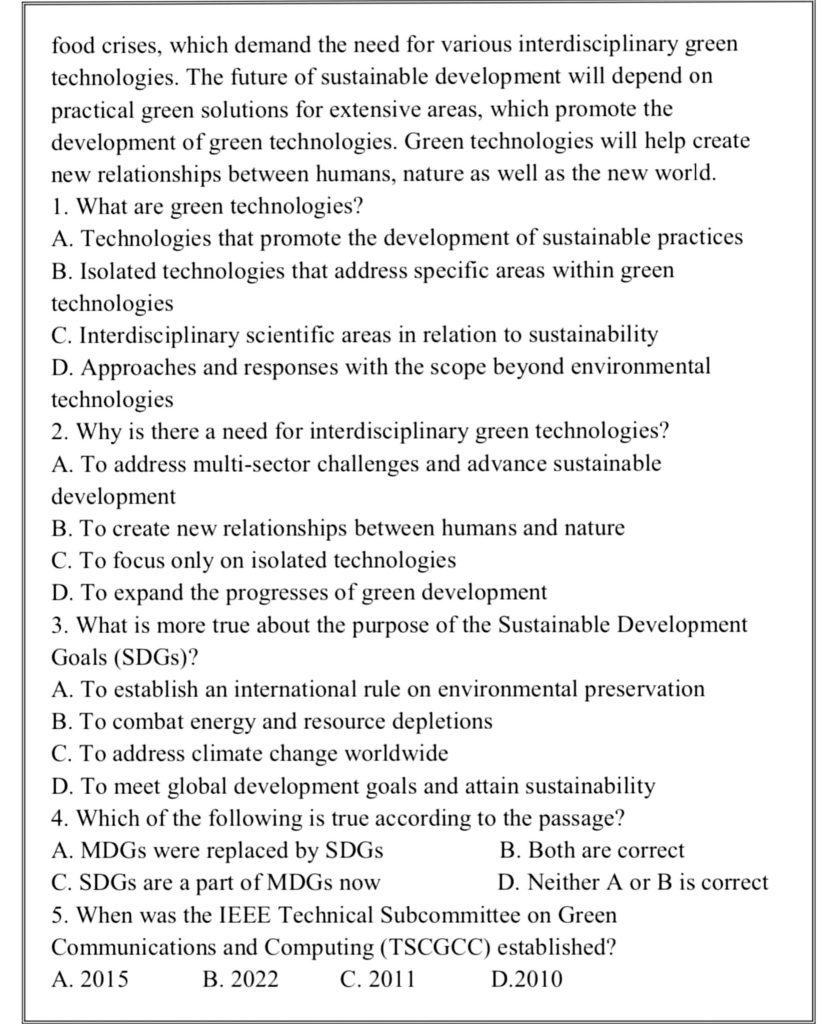Introduction: What does BUP really ask?
Worried about what actually appears in the BUP Admission Test? Good news: the exam pattern has stayed remarkably consistent in recent cycles, and you can prepare smartly by studying recurring question types. In this guide, you’ll get a clear breakdown of marks distribution, negative marking, and weightage, plus a curated practice set with answers that mirrors the last five admission seasons. If you’re searching for “BUP Admission Test Question with Answer Last Five Years,” this post is designed to be your one-stop prep page.
Recent official circulars confirm that BUP uses an MCQ-based written test with negative marking (–0.50 per wrong answer) and a standardized weightage that also considers SSC/HSC marks.
What is the BUP Admission Test & Why it matters
In simple terms: The BUP admission test is a faculty-wise MCQ exam evaluating core skills—Mathematics, English, General Knowledge, and (for some programs) Bangla and Science subjects. Your written score combines with SSC/HSC percentages to form the final merit.
Why it matters now: With negative marking and limited time, accuracy beats speed. Understanding frequently tested topics from the last five admission cycles helps you avoid traps, maximize correct attempts, and confidently clear the English qualifying threshold (minimum 40% in English is required to qualify).
Related/LSI keywords to keep in mind:
BUP admission syllabus, BUP mark distribution, BUP negative marking, BUP previous year questions (PYQ), BUP question bank PDF, BUP FBS/FASS/FSSS/FST syllabus, BUP answer key, BUP solved MCQ.

Exam Pattern & Mark Distribution (Latest Baseline)
BUP runs multiple faculties. Here’s the official, faculty-wise snapshot as per the latest circular (Session 2024–25). Always prioritize the current Admission Circular over older program pages if there’s a mismatch.
Faculty of Arts & Social Sciences (FASS)
- Subjects & Marks (Written MCQ 100): English 40, General Knowledge 40, Bangla 20
- Negative Marking: –0.50 per wrong answer
- Weightage: MCQ 55% + HSC 25% + SSC 20%
Source: official admission circular & program page.
Faculty of Business Studies (FBS)
- Subjects & Marks (Written MCQ 75): Mathematics 40, English 25, General Knowledge 10
- Negative Marking: –0.50 per wrong answer
- Weightage: MCQ 55% + HSC 25% + SSC 20%
Note: Some older program pages may show 100 marks; follow the latest Admission Circular.
Faculty of Security & Strategic Studies (FSSS)
- Subjects & Marks (Written MCQ 100): English 40, General Knowledge 40, Bangla 20
- Negative Marking: –0.50 per wrong answer
- Weightage: MCQ 55% + HSC 25% + SSC 20%
Faculty of Science & Technology (FST)
- Subjects & Marks (Written MCQ 60; 1 hour):
Sec-A: Mathematics 20, Sec-B: Biology 20, Sec-C: Physics 20, Sec-D: Chemistry 20
You appear in any three sections as applicable (e.g., BICE/BCSE must take Mathematics; BES must take Biology; combined options specified in the circular). - Negative Marking: –0.50 per wrong answer
- Weightage: MCQ 55% + HSC 25% + SSC 20%
Key consistency across the last five cycles: MCQ format, –0.50 negative marking, centralized dates in December, and weightage split that prioritizes the written test (55%). While minor mark distributions can adjust by faculty, the core structure has remained broadly the same, especially in the most recent circulars.
What recurring question types appear (based on PYQs)
Publicly shared previous-year sets and compile notes show consistent patterns:
- Mathematics (FBS/FST): Arithmetic (ratio, percent, average), algebraic manipulation, time & distance, time & work, simple probability, basic geometry.
- English (All): Grammar (articles, prepositions, subject–verb agreement), vocabulary (synonyms/antonyms), sentence improvement.
- General Knowledge (FASS/FBS/FSSS): Bangladesh affairs, world organizations, basic economics, recent current affairs.
- Bangla (FASS/FSSS): শুদ্ধ বানান, প্রতিশব্দ/বিপরীত শব্দ, প্রবাদ-প্রবচন, ব্যাকরণিক ব্যবহার.
- Science (FST): Conceptual basics from HSC Math/Physics/Chemistry/Biology as per section choice.
Helpful unofficial compilations exist on educational platforms; use them for topic spotting and test style, but always cross-check with the official circular for the current year.
BUP Admission Test Questions with Answers (Last Five Years – Style Practice Set)
How this set helps: It mirrors the style and difficulty that repeatedly shows up across recent admission seasons, so you can practice with confidence. (These are curated/original questions aligned to repeated PYQ themes.)
A) Mathematics – 10 MCQs (Answers & Explanations)
- A shopkeeper marks a book at Tk 500, gives 10% discount, then adds 15% VAT. Final price?
A) Tk 495 B) Tk 500 C) Tk 517.50 D) Tk 525
Answer: C. 500×0.90=450; 450×1.15=517.50. - The average of five numbers is 28. If 38 is removed, the new average is—
A) 25 B) 25.5 C) 26 D) 27
Answer: B. Total = 5×28=140; (140–38)/4=25.5. - A car goes 120 km at 60 km/h and returns at 40 km/h. Average speed?
A) 48 km/h B) 50 km/h C) 52 km/h D) 54 km/h
Answer: A (48). Harmonic-based: avg = 2d / (d/60 + d/40) = 48. - A can do a job in 10 days, B in 15 days. They work together for 3 days; B leaves. Total days to finish?
A) 7 B) 8 C) 9 D) 10
Answer: B. In 3 days together: 3(1/10+1/15)=3×(1/6)=1/2; remaining 1/2 by A in 5 days; total 8. - Simple interest on Tk 20,000 at 5% p.a. for 3 years?
A) 2,500 B) 3,000 C) 3,500 D) 4,000
Answer: B. SI=PRT=20000×0.05×3=3,000. - A bag has 5 red, 3 blue, 2 green balls. Probability of drawing red or green?
A) 0.5 B) 0.6 C) 0.7 D) 0.8
Answer: C. (5+2)/10=0.7. - Boys : Girls = 3 : 2 in a class of 40. Number of girls?
A) 12 B) 14 C) 16 D) 18
Answer: C. 2/(3+2)×40=16. - Area of a right triangle with legs 6 cm & 8 cm?
A) 20 B) 24 C) 26 D) 48
Answer: B. ½×6×8=24. - X invests Tk 50,000 for 12 months; Y invests Tk 80,000 after 6 months. Profit = Tk 39,000. Y’s share?
A) 13,000 B) 15,600 C) 17,333.33 D) 19,500
Answer: C. Ratio = 50,000×12 : 80,000×6 = 600k : 480k = 5:4. Y’s share = 4/9×39,000=17,333.33. - A number increases by 20% then decreases by 20%. Net change?
A) +4% B) 0% C) –4% D) –8%
Answer: C. 1.2×0.8=0.96 → –4%.
B) English – 8 MCQs
- Choose the correct form: “Neither the students nor the teacher ___ present.”
A) are B) is C) were D) have
Answer: B. Verb agrees with the nearer subject (“teacher”). - Choose the best replacement: “He insisted to go early.”
A) insisted going B) insisted on going C) insisted for going D) insisted that going
Answer: B. - Fill in the blank: “She is confident ___ her success.”
A) about B) of C) for D) on
Answer: B. - Synonym of “meticulous”:
A) careless B) hasty C) thorough D) average
Answer: C. - Antonym of “scarcity”:
A) rarity B) abundance C) deficit D) famine
Answer: B. - Correct sentence:
A) He, as well as his friends, are coming.
B) He, as well as his friends, is coming.
C) He as well as his friends are coming.
D) He as well as his friends is come.
Answer: B. “As well as” is parenthetical; main subject “He”. - Choose the correct article: “It was ___ honor to meet the Vice Chancellor.”
A) a B) an C) the D) no article
Answer: B. “Honor” starts with a vowel sound. - Improve the sentence: “The news are shocking.”
A) have been B) is been C) is D) were
Answer: C. “News” is singular.
C) General Knowledge – 8 MCQs
- Independence Day of Bangladesh is observed on—
A) 16 Dec B) 26 Mar C) 21 Feb D) 7 Mar
Answer: B. - The Father of the Nation of Bangladesh is—
A) Ziaur Rahman B) Bangabandhu Sheikh Mujibur Rahman C) Tajuddin Ahmad D) A K Fazlul Huq
Answer: B. - Currency of Japan—
A) Won B) Yuan C) Yen D) Ringgit
Answer: C. - Headquarters of SAARC—
A) Dhaka B) Kathmandu C) Colombo D) Thimphu
Answer: B. - UN Secretary-General (current) —
A) Ban Ki-moon B) Kofi Annan C) António Guterres D) Boutros Boutros-Ghali
Answer: C. - National flower of Bangladesh—
A) Rose B) Marigold C) White water lily (শাপলা) D) Lotus
Answer: C. - The Padma is a distributary of—
A) Brahmaputra B) Ganges C) Meghna D) Jamuna
Answer: B. - Capital of Nepal—
A) Thimphu B) Kathmandu C) Pokhara D) Patan
Answer: B.
D) Bangla – 6 MCQs
- শুদ্ধ বানান কোনটি?
A) উপবাস B) উপোস C) উপবাসন D) উপবাষ
উত্তর: A. - ‘সুনাম’ এর বিপরীত শব্দ—
A) কুখ্যাতি B) অপবাদ C) প্রশংসা D) খ্যাতি
উত্তর: B. - শূন্যস্থান পূরণ করুন: “সে কাজে ___।”
A) মনোযোগী B) মনোযোগ C) মনোযোগিতা D) মনোজ
উত্তর: A. - প্রবাদটি সম্পূর্ণ করুন: “অতি লোভে—”
A) তাঁতি নষ্ট B) কুলি নষ্ট C) ফল নষ্ট D) অর্থ নষ্ট
উত্তর: A. - সমার্থক শব্দ: “মধুর”—
A) তিক্ত B) সুমধুর C) তেতো D) কটু
উত্তর: B. - শুদ্ধ ব্যাকরণিক ব্যবহার নির্বাচন করুন—
A) সে আমাদের সাথে যান।
B) সে আমাদের সাথে যায়।
C) সে আমাদের সাথে যাও।
D) সে আমাদের সাথে গিয়া।
উত্তর: B.

Year-wise Insights (What stayed similar across the last five admission cycles)
Even though minor tweaks occur by faculty, these elements consistently show up:
- MCQ format with –0.50 negative marking across faculties.
- English competence matters: a minimum 40% in English is mandatory to qualify.
- Weightage emphasizes the written test (55%), with SSC and HSC contributing the remainder.
- FBS focuses on Mathematics & English, FASS/FSSS include Bangla & GK, FST is section-based (Math/Physics/Chemistry/Biology).
Where to cross-check and practice:
- Official BUP Admission Circular for the current year (pattern, dates, rules).
- Unofficial but helpful compiled PYQs for style/trend spotting (verify with current syllabus).
Expert Prep Plan (Actionable & Battle-tested)
1) Master the scoring rules first
- Aim high accuracy; skip guesswork when unsure (–0.50 hurts ranks fast).
- Track attempt accuracy in mocks: target 80–85% accuracy before test day.
2) Faculty-wise focus
- FBS (BBA): 70–75% of prep time on Math & English; keep a GK revision sheet for the last week. Patterns: arithmetic, algebra basics, data interpretation lite, vocabulary & grammar.
- FASS/FSSS: Split time among English, GK, Bangla. Keep a running notebook for recent national & global events plus Bangladesh history.
- FST: Drill conceptual problems from HSC textbooks; practice mixed three-section papers within 60 minutes to simulate the exact constraint.
3) Build a weekly routine (4–6 weeks)
- Week 1–2: Syllabus mapping + concept refresh (Math/English basics; Bangla rules; science formulas).
- Week 3–4: Topic-wise PYQ practice (unofficial compilations), then timed section tests.
- Week 5: Full-length mock papers; post-test analysis—log every error with its reason.
- Week 6 (taper): Light revision, formula decks, English error-spotting drills, current affairs flashcards.
4) Exam-day tactics
- Start with your strength section to build momentum.
- Use Triage: (i) Sure shots → (ii) Short calculative → (iii) Time-consuming.
- Keep an eye on English qualifying—don’t under-attempt that section.
5) What most toppers do differently
- Maintain a “mistake book” (only wrong questions & fixes).
- Practice OMR-style bubbling after every page of 5–10 questions to reduce transfer errors.
- Simulate the exact timing (60 minutes for FST; 60 minutes/75–100 marks elsewhere as scheduled) so pacing becomes instinctive.
Suggested Visuals (place these in the article)
- Infographic: Faculty-wise marks distribution & negative marking. (Use the numbers cited above.)
- Table: Comparison of FBS vs FASS vs FSSS vs FST (subjects, total marks, time, negative marking).
- Checklist image: Exam-day quick checks (ID, pens, watch, admit card rules like calculator policy—note FST exceptions only).

FAQs (Built for Google Snippets)
1) What is the BUP admission test pattern?
An MCQ-based written exam with negative marking (–0.50 per wrong answer). Subjects vary by faculty (e.g., Math/English/GK for FBS; English/GK/Bangla for FASS & FSSS; section-based science & math for FST). Written test carries 55% of the weight; SSC/HSC add the rest.
2) Why is English so important in BUP admissions?
There’s a minimum 40% English qualifying requirement. Even with a good overall score, missing this threshold can disqualify you.
3) Is there negative marking in BUP? How much?
Yes. As per the latest circular, –0.50 is deducted for every incorrect answer. Plan your attempts strategically.
4) How do I get BUP previous year questions (PYQs)?
Use reputable compilations/shared sets for practice & trend spotting, but always cross-check subjects and marks with the latest official circular. We’ve seen reliable community uploads and notes on study platforms.
5) What calculator policy applies?
Calculators are not allowed except for FST, where a list of approved models is provided on the admit card’s back. Read your admit card instructions carefully.
Conclusion: Ready to ace the paper?
The BUP Admission Test Question with Answer (Last Five Years) approach is about recognizing patterns: predictable subject splits, firm negative marking, and a qualifying English bar. Use the solved practice set above to sharpen accuracy, then drill full-length mocks under time. Check the latest Admission Circular for any micro-changes and walk into the exam with a clear plan.
Your next step: Bookmark this guide, share it with a friend who’s applying, and tell us which faculty you’re sitting for—I’ll tailor a faculty-specific mini-mock just for you!
References (official & helpful)
- BUP Admission Circular (2024–25): pattern, dates, negative marking, weightage, faculty tables. admission.bup.edu.bd
- Program pages (use for context, defer to circular for latest marks): BA (Hons) in English; BBA. Bangladesh University of Professionals
- PYQ style & topic trends (unofficial practice resources): curated sets and community notes.

